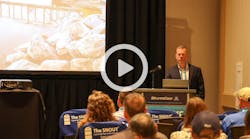Editor’s Comments: Where Do We Go From Here?
A little more than two years ago, I wrote an editorial for Stormwater—Erosion Control’s sister publication—about the agricultural exemption from many of our water-quality regulations. While urban areas and construction sites are subject to National Pollutant Discharge Elimination System permits and other requirements, agricultural operations have less oversight, and their participation in most state and federal water-quality programs is voluntary.
From that editorial: “Many urban stormwater managers feel their programs’ incremental and costly efforts are undermined by unregulated ag discharge. An often-cited example is the dead zones in the Gulf of Mexico and elsewhere . . . Researchers have shown that the source of most of the nutrients causing the dead zones is agricultural runoff. Compared to that, a city’s illicit discharge detection and elimination program, no matter how successful, can seem a paltry undertaking.”
The programs in which farmers and ranchers can choose to participate—some offered through the USDA’s Natural Resources Conservation Service—help with such things as improving irrigation practices, applying less fertilizer, and experimenting with cover crops or different tillage techniques to reduce erosion. But, as I pointed out back then, funding for many of these programs has been shrinking, and I don’t think it’s likely to be increased under the current administration. Nor is it likely that the agricultural industry will be subject to increased regulations; indeed, an executive order signed by the president in February orders a review of the Clean Water Rule that was put forward during the Obama Administration.
All that said, though, it’s easy to complain, and this article in this issue takes a look instead at some productive things that are being done—some of it by the government, some by private organizations and nonprofit groups—to improve soil health and limit the use of fertilizers. As one soil scientist interviewed in the article notes, “We’ve been blaming agriculture for everything, but we forget that it’s feeding us three times a day.”
The ideas explored in the article—and they’re just a few among many others out there—include NutrientStar, a program along the same lines as EPA’s WaterSense or Energy Star programs, which label appliances and products that are water or energy efficient. NutrientStar, which is not a government program but is run by a not-for-profit environmental organization, provides tools and resources for farmers to help them limit the amount of fertilizer they use. It also has a labeling system “to denote producers whose grains and products like fruits or vegetables were grown using cover crops and techniques to advance soil health and manage nutrients.” It’s not an official rating system, and it’s a good bet many people haven’t heard of it yet, but as the program’s administrator notes in the article, consumers are taking a greater interest in where their food comes from.
The article also has some insights from a farmer in Maryland—not far from the Chesapeake Bay, subject to one of the most comprehensive TMDLs in the country—who looks at the issues in terms of soil and water quality as well as financial considerations and increased or decreased yields.
In addition to the ones discussed in the article, what programs—government sponsored or private—are you aware of in your part of the country? Do you think voluntary efforts without stringent regulation—the carrot without the stick—have a chance at making a real difference? Will consumer preferences be strong enough to influence agricultural practices? Share your thoughts on our website or email us at [email protected].


